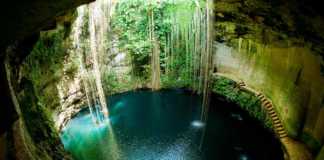It’s a surprise to most people that the country of Mexico is officially known as the United Mexican States, and this is because there are 32 states in Mexico, each free to govern themselves in internal affairs. Each Mexican state has its own unique attractions, from the deserts of Baja California to the tropical rainforests of Chiapas, the vibrant metropolis of Mexico City to the tranquil villages of Oaxaca.
The country’s rich history and culture is reflected in the states of Mexico. Mexico City, the political and cultural capital, is packed with historical sites such as the ancient city of Tenochtitlan and the pyramids of Teotihuacan. Visit the state of Oaxaca for its indigenous communities and traditional crafts in the state of Jalisco, which is the birthplace of tequila and famous for its mariachi music and traditional dances such as the Jarabe Tapatío. The state of Yucatán has eye-popping Mayan ruins, such as Chichén Itzá and Uxmal, beaches and coral reefs. So, here are the 32 states in Mexico. Which are your favourites?
Contents
- The 32 States In Mexico
- An A To Z Of Mexican States
- 1- Aguascalientes
- 2- Baja California
- 3- Baja California Sur
- 4- Campeche
- 5- Coahuila
- 6- Colima
- 7- Chiapas
- 8- Chihuahua
- 9- Durango
- 10- Guanajuato
- 11- Guerrero
- 12- Hidalgo
- 13- Jalisco
- 14- México
- 15- México City
- 16- Michoacán
- 17- Morelos
- 18- Nayarit
- 19- Nuevo León
- 20- Oaxaca
- 21- Puebla
- 22- Querétaro
- 23- Quintana Roo
- 24- San Luis Potosí
- 25- Sinaloa
- 26- Sonora
- 27- Tabasco
- 28- Tamaulipas
- 29- Tlaxcala
- 30- Veracruz
- 31- Yucatán
- 32- Zacatecas
The 32 States In Mexico
Top Tours
- Mexico Chichen Itza Ik Kil Cenote and Valladolid Full Day Tour
- Mexico Cabo San Lucas Camel Outback Adventure and Eco Farm from Los Cabos
- Mexico Teotihuacan Pyramids and Basilica of Guadalupe
- Mexico Cancun Viator Exclusive Combo Tour Tulum Ruins Akumal Turtle Plus Cenote and Caves
- Mexico City Hot Air Balloon Flight over Teotihuacan
An A To Z Of Mexican States
1- Aguascalientes
Does the name give it away?
Aguascalientes, which means ‘hot waters’, is situated in central Mexico and gets its name because of the large number of hot springs that can be found throughout the state.
The Sierra Fria Nature Reserve is one of the state’s top natural attractions with gorges and pine forests where you can go camping, hiking, sports fishing and see wild animals like pumas, deer and boar.
2- Baja California
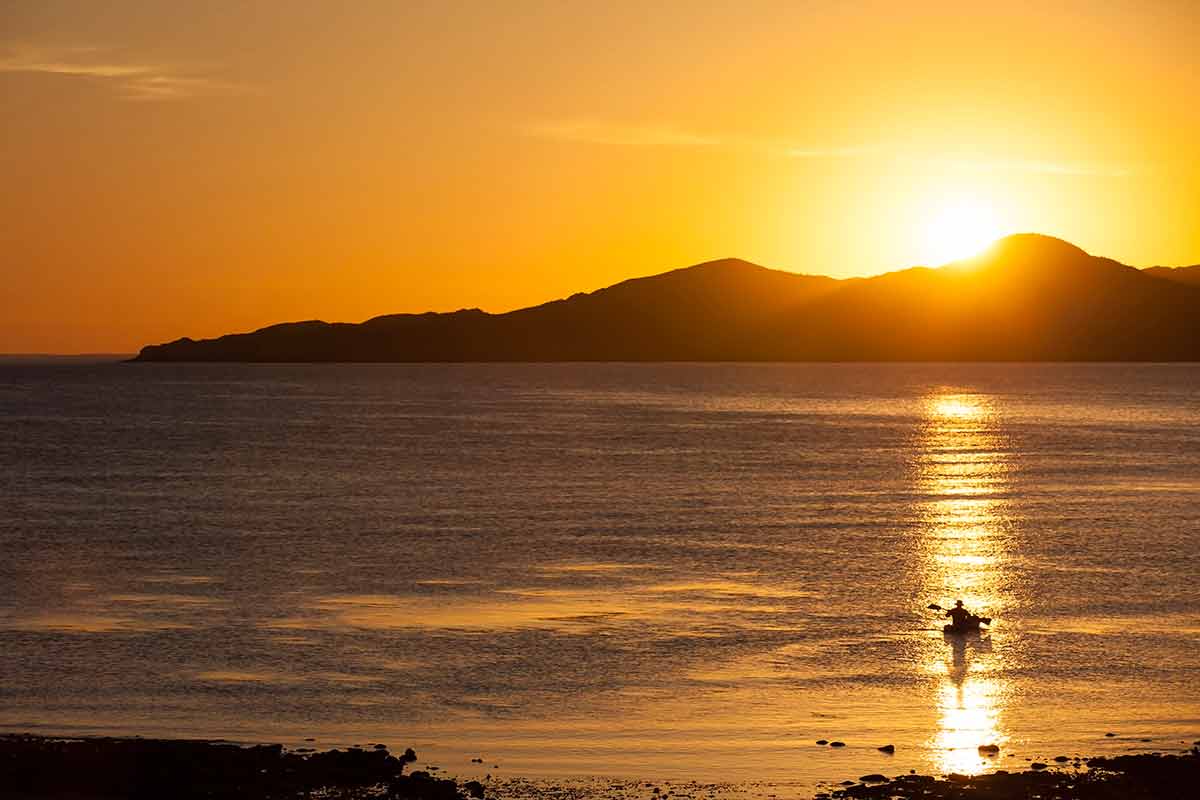
Just across the border from California, the state of Baja California makes up the northern half of the Baja California peninsula.
This state receives a lot of visitors because of its proximity to the United States.
Popular spots in the state include Mexicali, the state capital, which receives many day-trippers from California just across the border.
Rosarito Beach is a resort town known for its wild nightlife and San Felipe is another resort town where the tides can recede by over a mile (2 km).
If you enjoy living on the edge, don’t miss Guadalupe Island, where you can go on a diving excursion to see Great White sharks.
You may also enjoy touring the Guadalupe Valley wine route.
3- Baja California Sur
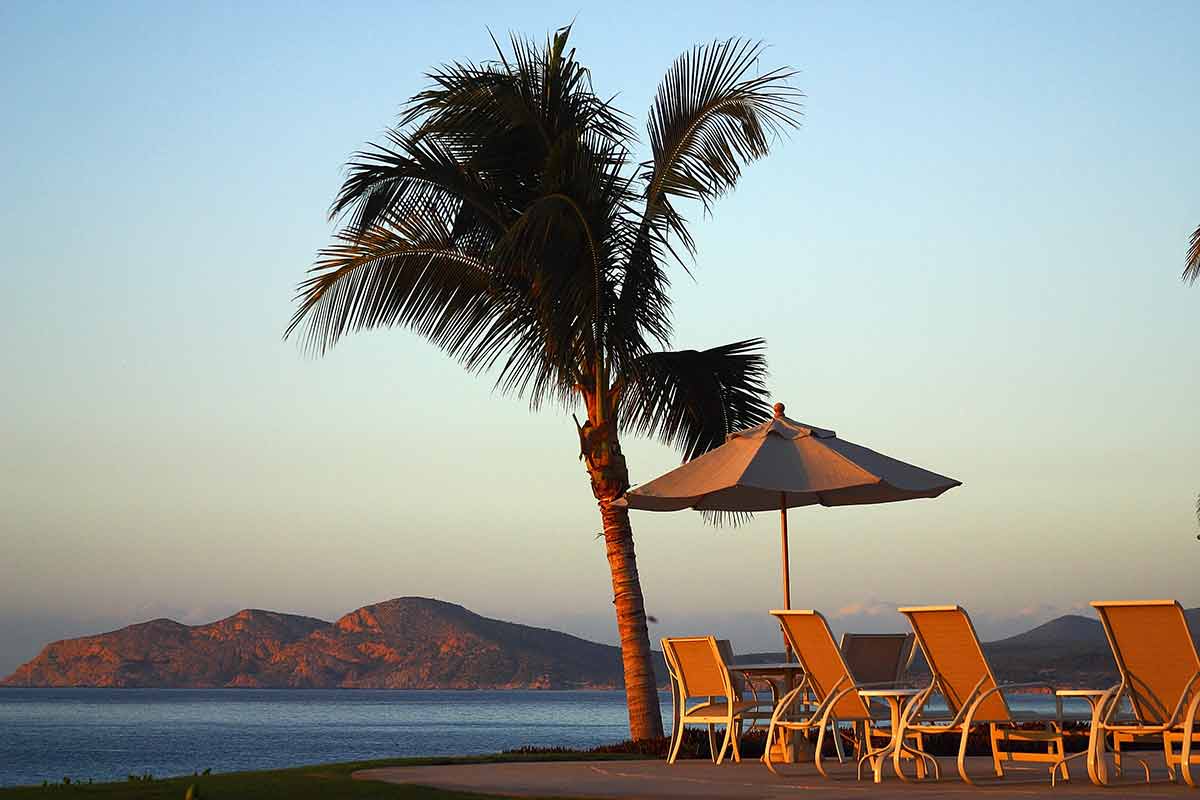
On the Baja California peninsula in north-western Mexico lies the state of Baja California Sur.
This state is surrounded by water on three sides, and these waters are some of the richest in the world, drawing tourists to Baja California Sur each year.
Baja California Sur is recognised as one of the most important sport fishing destinations globally.
The main attractions are the beaches, of course, and most visitors stay in the resort towns of Los Cabos at the very southern tip of the peninsula or in the state capital of La Paz on the eastern side of the state.
There are many water sports activities here, including swimming with whale sharks, whale-watching and scuba diving. Camel safaris are also very popular.
If you love diving, don’t miss Cabo Pulmo National Park, nicknamed the ‘Aquarium of the World’.
4- Campeche
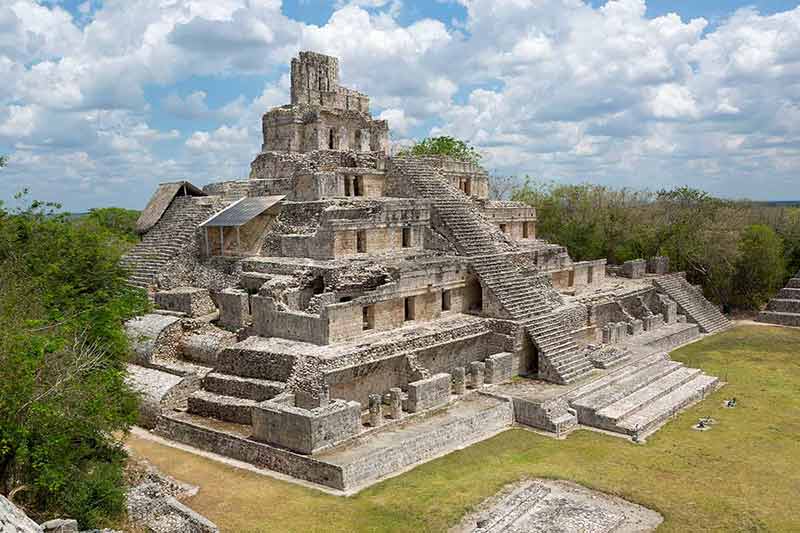
The state of Campeche is located in southeastern Mexico and borders the Gulf of Mexico on its west coast.
Campeche is rich in Mayan ruins and colonial sites. History aficionados will love exploring its cities and jungles.
For a journey into Campeche’s colonial past, the state capital of the same name, Campeche has a typically colonial and fortified centre.
If you’re curious about the Mayans, the ruins at Calakmul are great for an adventure, lost deep in the jungles on Mexico’s border with Guatemala and full of amazing flora and fauna due to the state’s humid and rainforest climate.
Find out more about a five-day tour of Campeche.
5- Coahuila
Located in northern Mexico, the state of Coahuila may be off the traditional tourist path but this does not mean it’s not worth a visit.
The semi-desert climate of the state is perfect for outdoor activities and will appeal to more adventurous traveller types.
One of Coahuilia’s highlights is the town of Cuatrociénegas which has its own unique ecosystem of aquamarine pools with over 150 different endemic plant and animal species found nowhere else on earth.
To appreciate the beauty of the desert, camping at Dunas de Bilbao is another great experience this state offers.
6- Colima
Colima, in western Mexico, is one of the country’s smallest states, both in size and in population.
What it may lack in size, it makes up for in its abundance of colonial towns, beaches, sites of archaeological interest and wildlife.
Colima’s most famous attractions are the city of Manzanillo which borders the Pacific Coast and has lovely beaches, and that state’s capital city, also Colima, which is one of the oldest cities in Mexico.
Colima has been attracting fishermen for decades due to its reputation as the ‘World Capital of Sailfish’ with 336 species found along its shores.
7- Chiapas
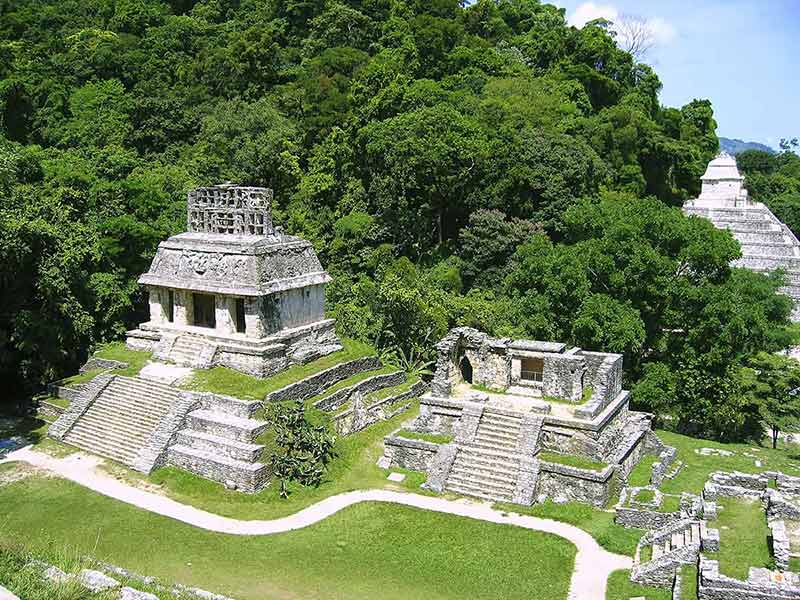
As far south as you can go in Mexico lies the state of Chiapas.
Despite its size, this state has seven distinct geographical regions, and its biodiversity is one of the main draws for visiting Chiapas.
Alongside its biodiversity, Chiapas has a rich cultural history with many Mayan ruins and colonial towns to appreciate.
Several tourist routes are mapped out in the state, such as the Maya Route along Mexico’s border with Guatemala through the Lacandon Jungle and the well-known Palenque ruins.
The ruins have some of the finest sculptures and architecture from the Mayan era.
8- Chihuahua
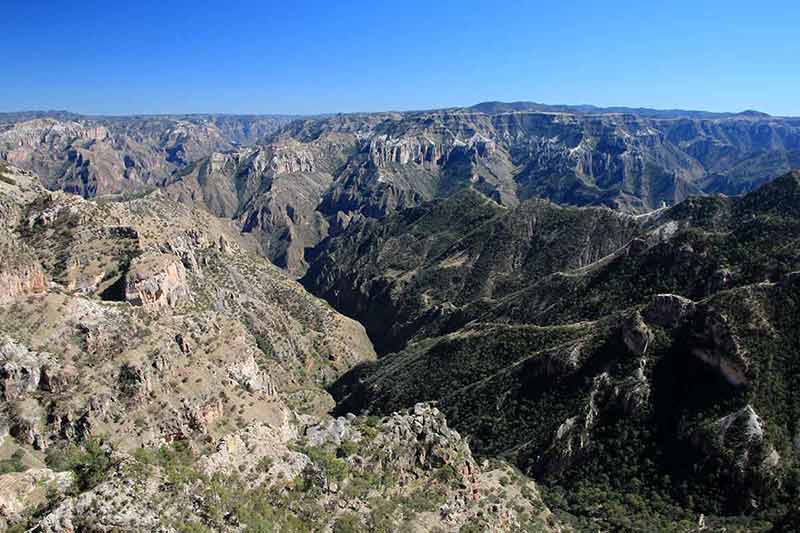
In central-northern Mexico, the state of Chihuahua is the largest of Mexico’s states.
You’ve probably heard of the dog that goes by the same name because the dog breed, ‘chihuahua,’ was first noted here in the 19th century.
The state of Chihuahua doesn’t get its name from our furry friend, though but from the Chihuahuan Desert, which covers a large portion of the state.
As one of Mexico’s most diverse states geographically, with mountains, valleys, rivers and forests, adventurers from all over the world are drawn to Chihuahua.
Hiking, kayaking, rock climbing, hunting and camping are just some of the adventures you can embark on.
Chihuahua’s biggest attraction is undoubtedly the Copper Canyon which is deeper than the Grand Canyon in the USA and can be appreciated aboard the Chepe Express, a railway that passes through the majestic landscape.
9- Durango
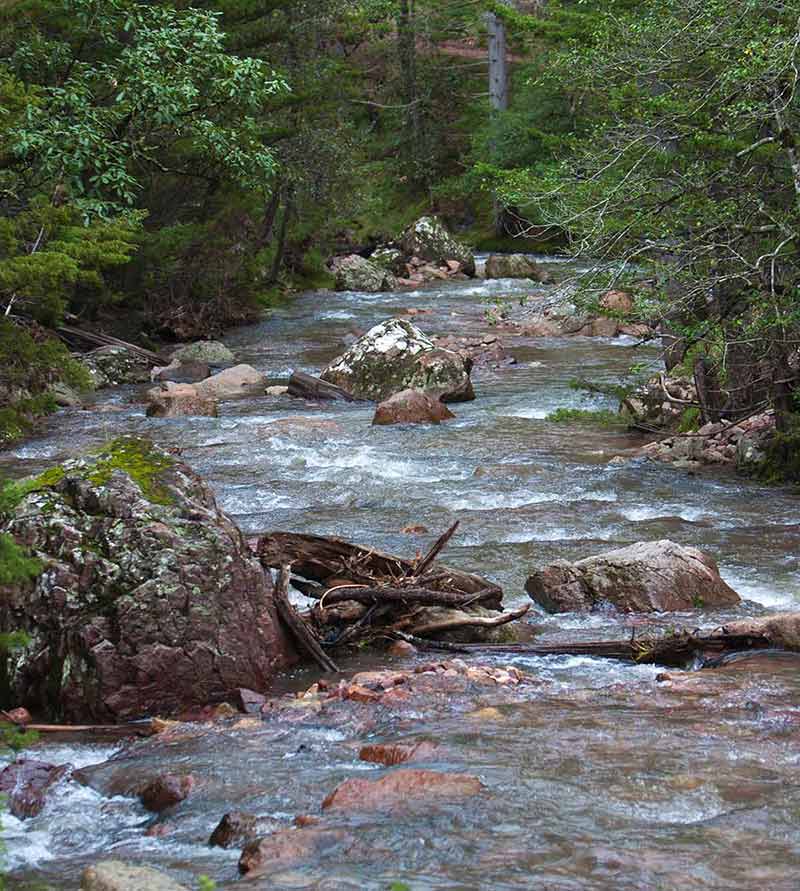
Mountainous Durango in north-western Mexico is a rural and sparsely populated state and one often associated with the wild frontier.
One of the most popular attractions for visitors to Durango is the capital city itself, Victoria de Durango, which was declared a national monument because of its rich colonial architectural heritage.
Thanks to the many thermal springs found here, it’s also considered a health resort.
For a real adventure, check out the deepest canyon system in North America, La Quebrada.
Beware of scorpions!
They are very common in Durango, so much so that even the football team are called the Scorpions.
10- Guanajuato
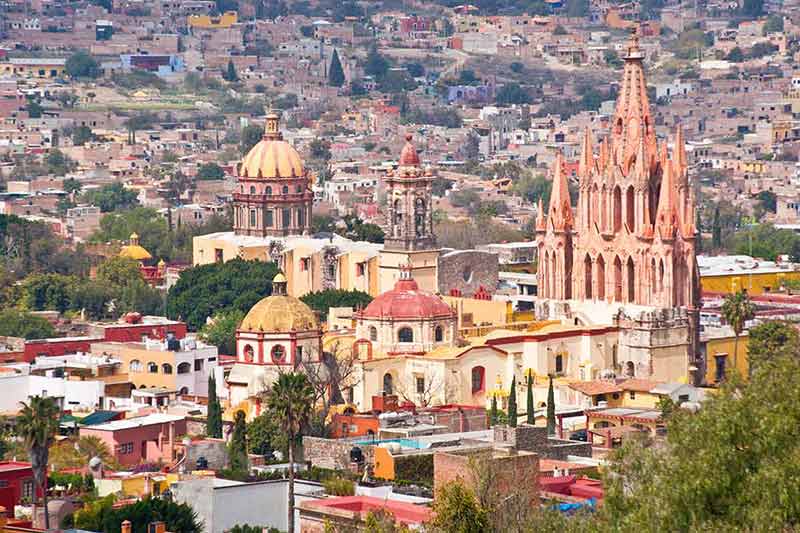
Guanajuato is one of the central states in Mexico, and this central location has played an important role in Mexico’s history.
The state’s three most-visited attractions include are the cities of Guanajuato, San Miguel de Allende and Dolores Hidalgo.
Guanajuato City is the state capital, and this very artsy city is unique for its subterranean streets, which you can explore on a city tour.
San Miguel de Allende, with its eternal spring climate and Neo-Gothic cathedral, is popular with ex-pats and played an important role in Mexico’s independence, but not more so than the city of Dolores Hidalgo where the fight for independence broke out in 1810.
11- Guerrero
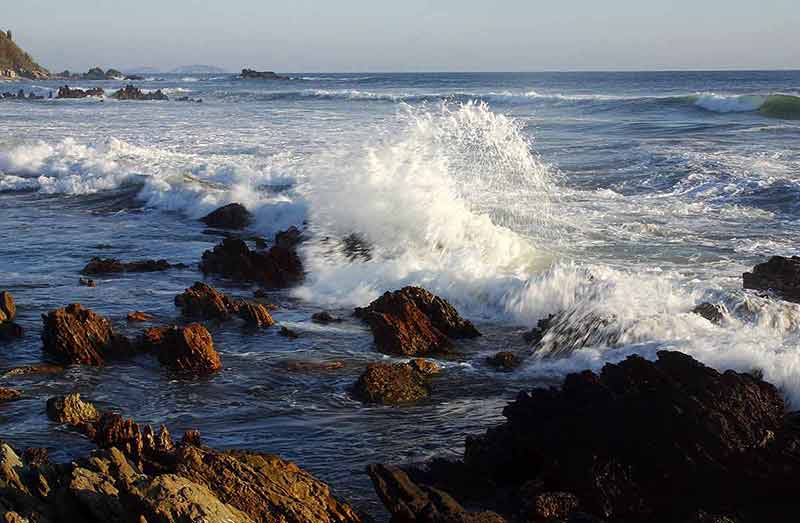
The state of Guerrero is located in southern Mexico, bordering the Pacific Ocean.
Guerrero is a popular tourist destination.
Its three main cities that draw visitors are referred to as the Triangle of the Sun and include the cities of Acapulco, Zihuatanejo and Taxco.
Acapulco was once an important port city and getaway beach resort for the famous and elite.
Today, Acapulco draws crowds for its nightlife and beaches. It’s a popular cruise ship port. Check out this tour.
Zihuatanejo has a more traditional vibe and is a popular destination for sports fishing, while Taxco has been declared a national monument because of the numerous historical buildings left over from when Taxco was an important mining town.
12- Hidalgo
In east-central Mexico, the state of Hidalgo is quite small.
Despite its size, it has a thriving tourism industry thanks to its many archaeological sites and mountainous landscape, which is perfect for extreme sports.
The Corridor Tulancingo has it all for sports lovers, with sports activities involving all four elements.
Away from the mountains, the Toltec warrior statues at the archaeological site of Tula are a particular draw, as are the ruins at Huapalcalco.
For those looking for a relaxing vacation, Hidalgo ranks second in Mexico for its number of hot springs, reaching as high as 80°C (176 °F).
13- Jalisco
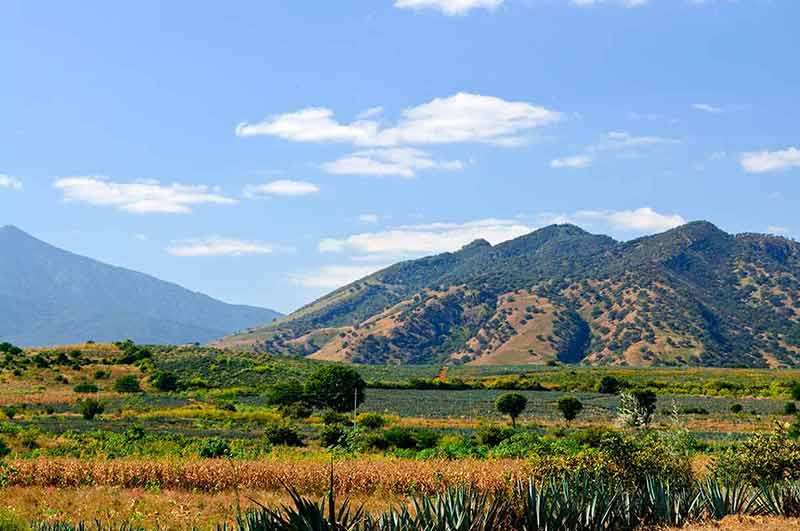
Jalisco, in central-western Mexico, is one of Mexico’s major economic centres, so much so that Jalisco’s slogan is ‘Jalisco es Mexico!’ which translates as ‘Jalisco is Mexico!’
It’s not just its economy either, much of Mexico’s culture originates in Jalisco, with mariachi, ranchera music, birria and tequila all originating from this state.
Because of its border with the Pacific Ocean, Jalisco offers visitors many beach resorts and outdoor activities.
The most important tourist area in Jalisco are Puerto Vallarta, a busy beach resort town surrounded by lush jungle popular for its dolphin watching tours.
Lake Chapala is Mexico’s largest freshwater lake which is very popular with ex-pats and the town of Tequila has large swathes of agave fields where the famous drink, named after the town, originated.
14- México
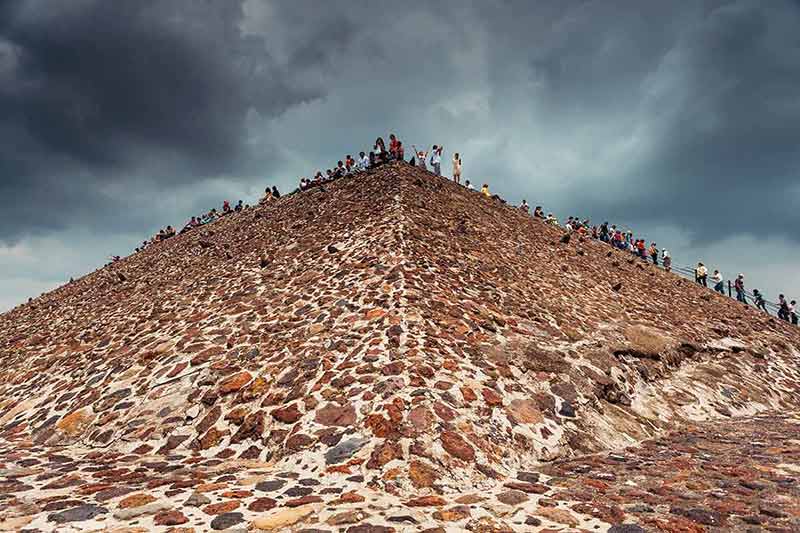
The state of Mexico surrounds the nation’s capital Mexico City on three sides and has the highest population and population density in the country due to the spillover from Mexico City.
Two impressive attractions of this state include the magnificent ancient city ruins of Teotihuacan with its two massive climbable pyramids, the Pyramid of the Sun and the Pyramid of the Moon. A popular activity is to ride in a hot air balloon over the ruins.
The state’s natural iconic feature is the Nevado de Toluca National Park, located just south of the state’s capital, Toluca, where you can find the snowcapped volcano, Nevado de Toluca is the fourth-highest peak in Mexico and has two lakes at its summit.
15- México City

Mexico’s largest and capital city, Mexico City, is treated as its own state.
It is the oldest capital in the Americas, built on the razed remains of the ancient Aztec capital of Tenochtitlan and today, it is the sixth-largest city in the world.
Mexico City is brimming with museums, art galleries and concert halls, so visitors will always have something to do.
One of Mexico City’s most visited attractions is the sprawling Chapultepec Park, which has its own castle and houses one of the most impressive museums in the city: the National Museum of Anthropology (you can see the Aztec Calendar stone here).
Other popular attractions are the Templo Mayor, the main temple in the ancient capital of Tenochtitlan, and Mexico City’s historic centre, which has around 1400 buildings from the 16th to the 19th century and has been declared a UNESCO World Heritage Site.
16- Michoacán
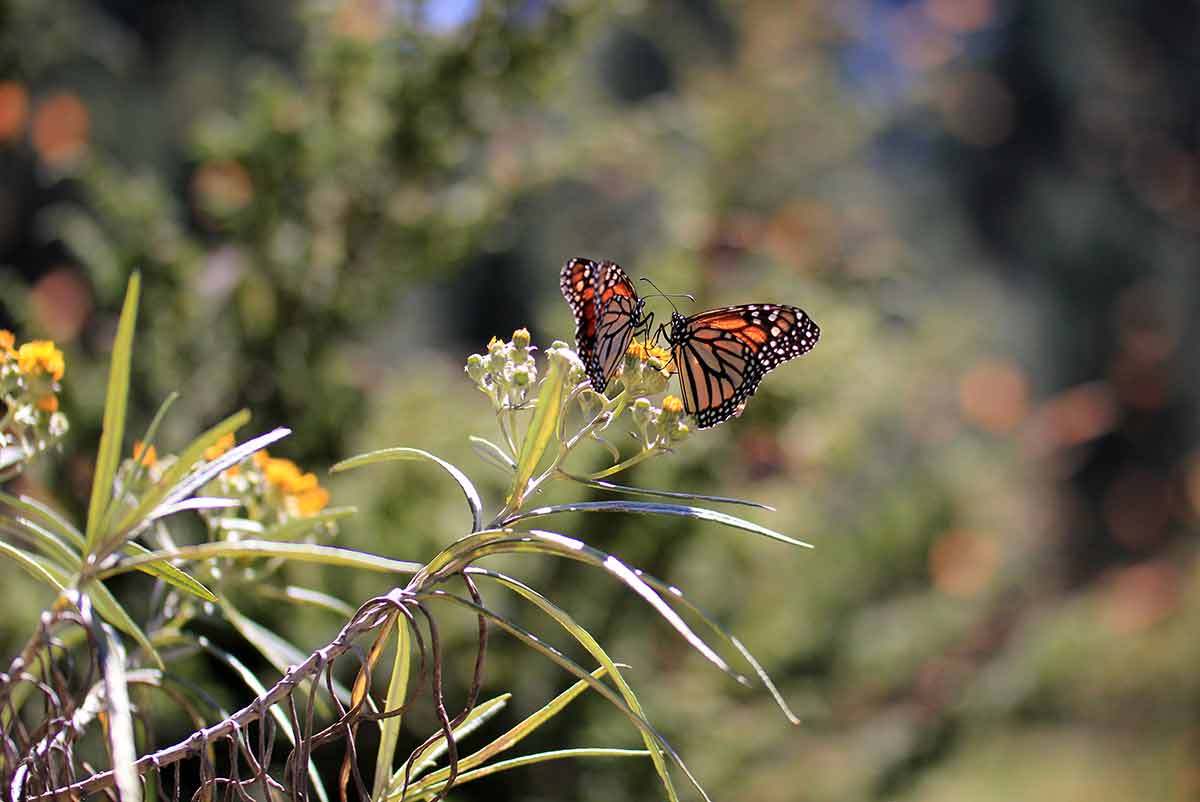
The ‘soul of Mexico’ is known for its heritage; the state of Michoacan is located in western Mexico and borders the Pacific Ocean on one side.
Michoacan is home to Mexico’s largest lake, Lake Chapala, and the volcano Paricutin which only formed in 1943.
It has been named one of the 7 Natural Wonders of the World because mankind watched its rapid formation.
Both of these attractions are certainly worth a visit.
Michoacan is also known for its lively Day of the Dead festivities, which take place on the island of Janitzio and in Patzuaro, the capital of the ancient Purépecha Empire.
17- Morelos
Located in south-central Mexico, Morelos is the second smallest state in the country.
With a pleasant all-year climate, some amazing natural scenery and vivid Carnaval celebrations, many visitors come to Morelos.
One of this state’s most stunning natural attractions is El Tepozteco National Park, a sprawling park that incorporates 16 mountains and many 16th-century monasteries that can be explored on the slopes of the volcano Popocatepetl.
Lovers of history will enjoy the ruins of Xochicalco, and if you’re visiting around Lent, don’t miss the town of Tepoztlan, known for its lively Carnaval.
18- Nayarit
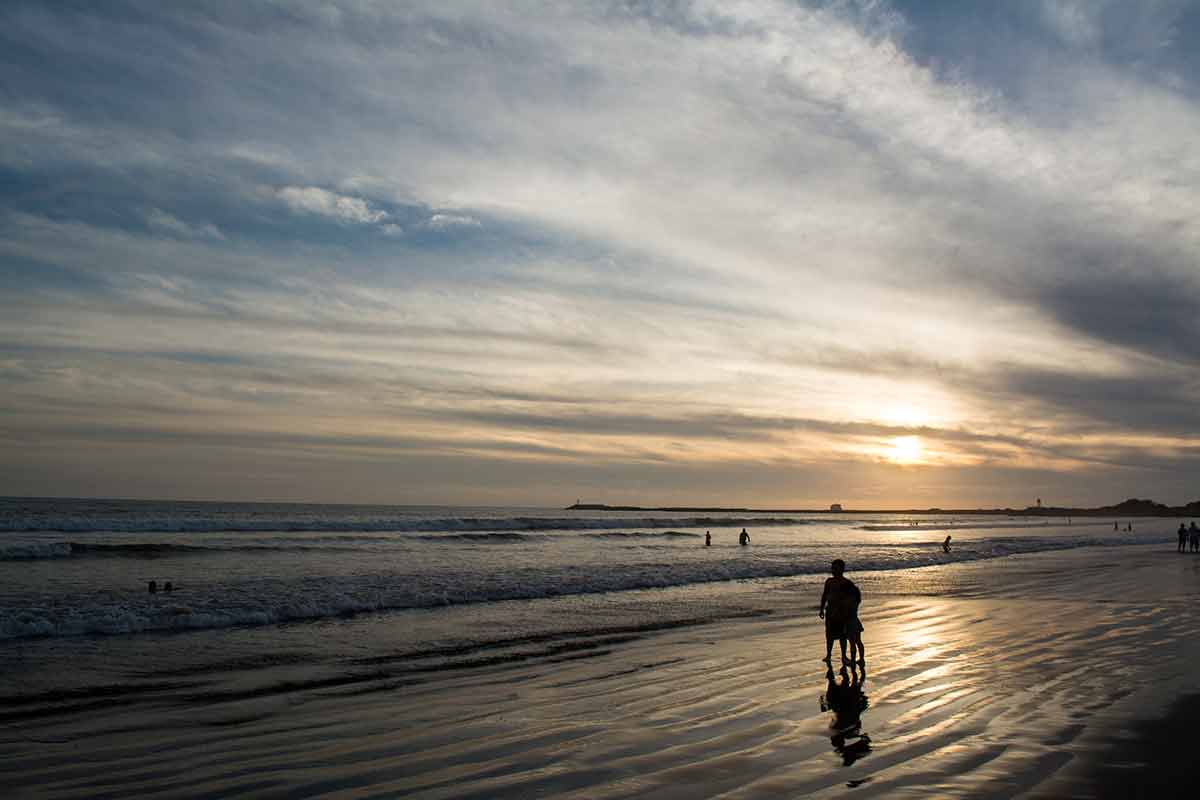
Mountains and canyons in central-western Mexico dominate the tiny state of Nayarit.
It has grown in popularity as a travel destination thanks to its beaches which can be found near the colonial town of San Blas in the north of the state.
Most of the coastal communities in the state of Nayarit are authentic and have long been a favourite for backpackers and surfers.
You’ll only find resort hotels in the south of the state spilling over from the resort town of Puerto Vallarta.
Another popular attraction in Nayarit is the man-made island of Mexcaltitan de Uribe, known as Mexico’s Venice and considered the Aztec civilisation’s birthplace.
19- Nuevo León
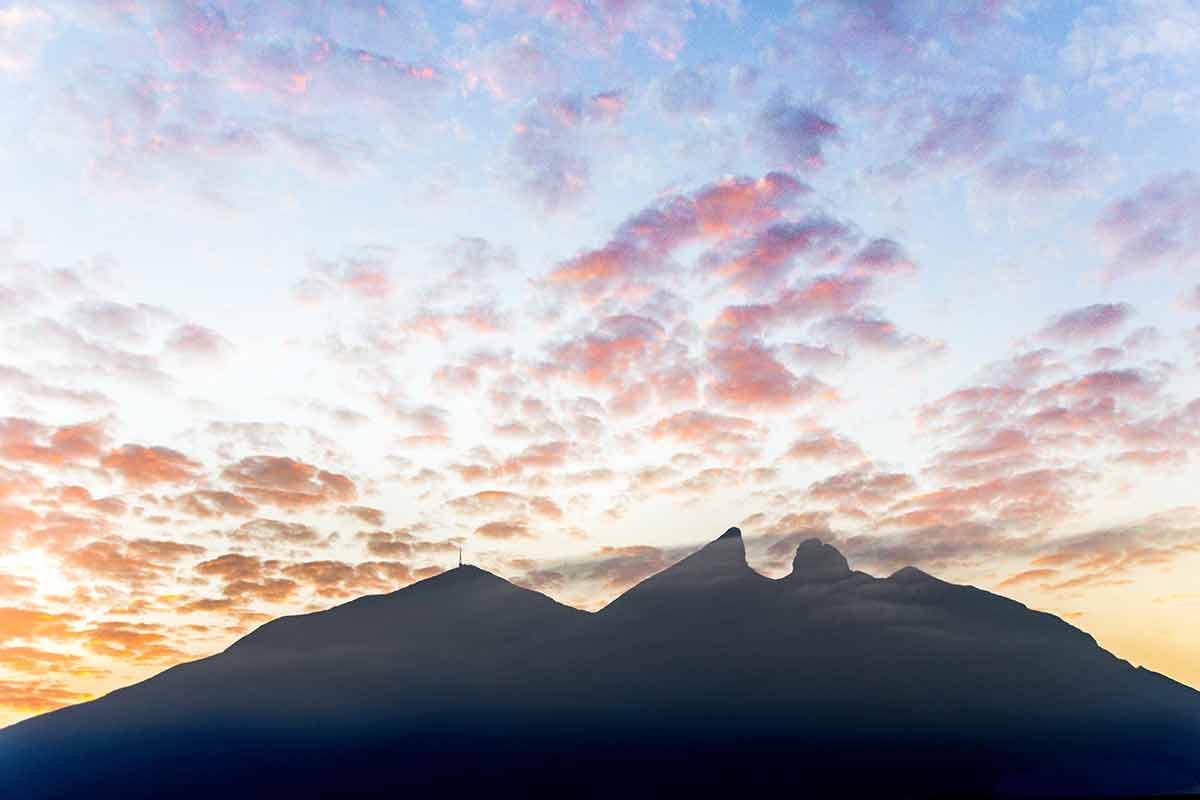
Nuevo Leon, in northern Mexico, is quite an extreme state climate-wise, seeing very little rainfall all year.
This state is great for nature lovers as it is home to one of Mexico’s grandest national parks, Cumbras de Monterrey.
Visitors can go trekking and practice mountain sports among the majestic Sierra Madre Oriental mountains. If you’re keen on adventure, join this hiking and canyoning experience.
20- Oaxaca
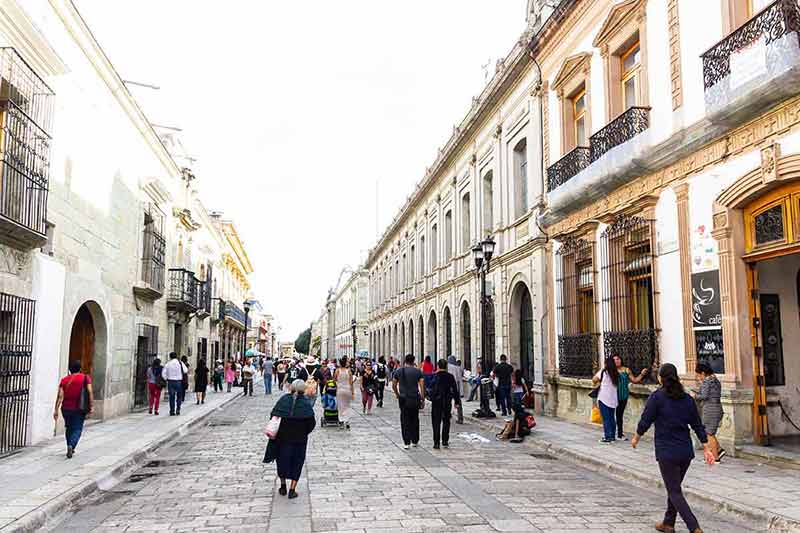
Oaxaca is a state in the south of Mexico and THE state to visit if you want to experience Mexico’s rich ethnic culture.
There are over 16 different ethnic minorities living throughout Oaxaca who still speak their native languages and practise traditions that have existed for thousands of years and which have made Oaxaca famous for its handicrafts and arts.
The Pacific Ocean that borders Oaxaca’s south is an important bolster for the state’s tourism offering many spectacular and hidden beaches perfect for surfing.
To access Oaxaca’s sandy south, there are many beach resort towns you can base yourself, such as Huatulco, Puerto Escondido and Zipolite.
Another top attraction in the state the ruins of the city of Monte Alban, once the capital of the Zapotec empire and now some of the best-preserved ruins in Mexico!
Oaxaca doesn’t stop there! This state is regarded highly for its gastronomy, including its seven different types of moles, mezcal production and chocolate.
21- Puebla
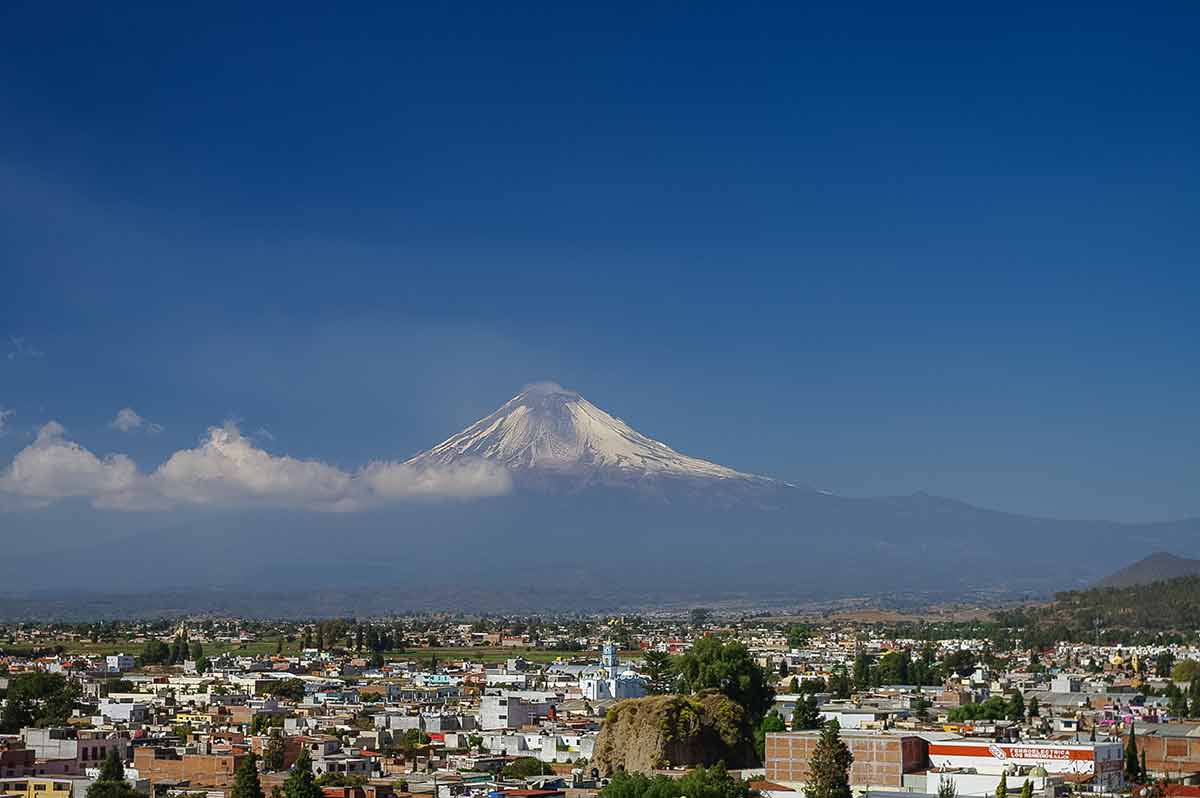
Located in east-central Mexico, the state of Puebla boasts over 2000 historic buildings.
The state’s main visitor attractions include the state’s capital Puebla which is known for its crazy amount of churches (there’s a joke that there’s a church for every day of the year).
There’s also the town of Cholula, with its incredible volcano backdrop and the largest pyramid in the world by volume.
If you love a challenge, head to Iztacchuatl-Popocateptl National Park and climb the slopes of this still-active volcano Popocatepetl whose slopes are littered with beautiful 16th-century monasteries.
22- Querétaro
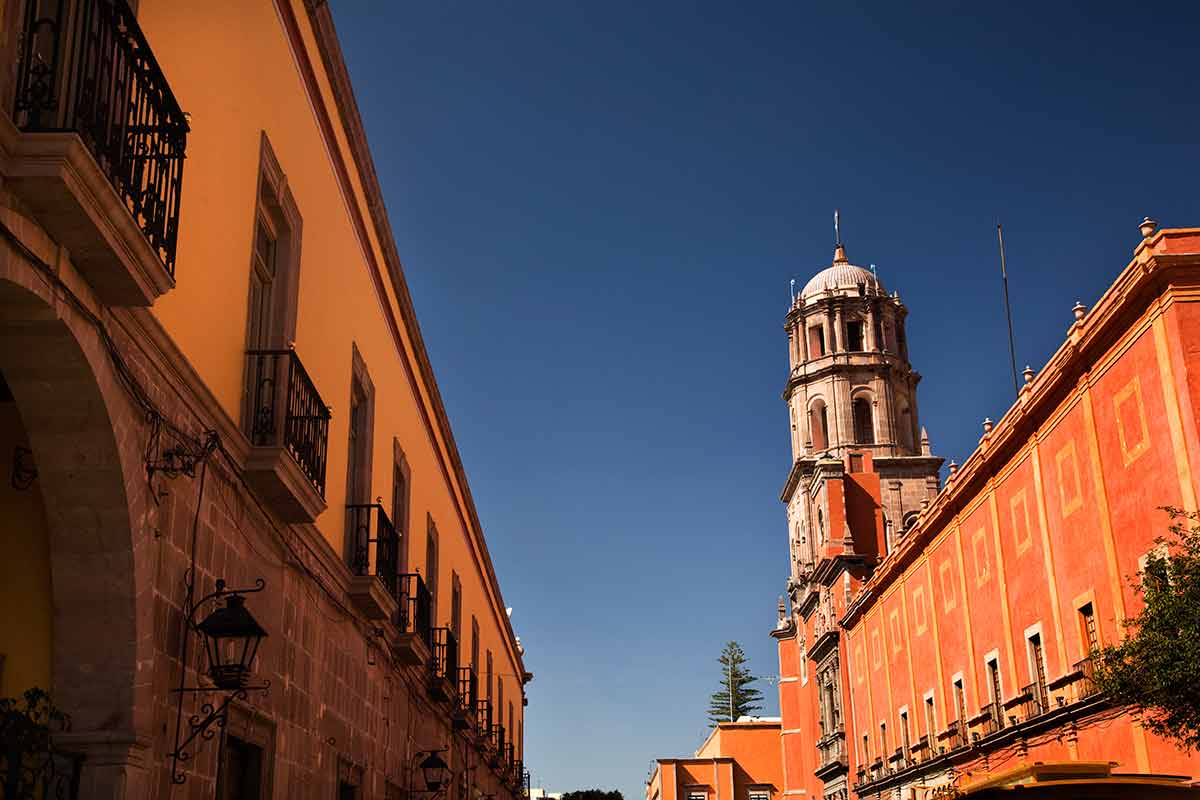
The state of Queretaro in north-central Mexico hosts many micro-ecosystems ranging from desert to tropical rainforest in its small area.
Two historical attractions in the state of Queretaro are its capital, which goes by the same name, and which has a UNESCO World Heritage Site historic centre and an impressive 74-arched aqueduct.
The state of Queretaro is also known for its town of San Sebastian Bernal, where you can find the third-largest monolith in the world.
23- Quintana Roo
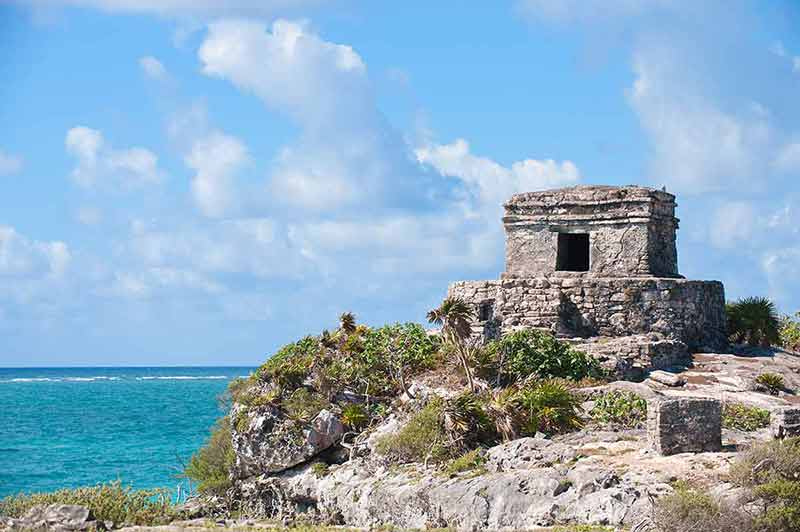
With the Gulf of Mexico and the Caribbean coastlines in southeast Mexico, the state of Quintana Roo is known as the Mexican Caribbean.
You’ll most likely have heard of Cancun, one of Mexico’s top tourist destinations.
You’ll find resort cities next to ancient Mayan sites in Quintana Roo.
The micro-tourist areas within the state include Cancun, the Riviera Maya, the Maya Zone and the Great Costa Maya.
Have you noticed a theme?
Yes, this state is rich in Mayan ruins, including some of Mexico’s most beautiful ruins at Tulum, which overhang a hidden beach facing the turquoise Caribbean Sea.
24- San Luis Potosí
The central Mexican state of San Luis Potosi is an important mining and agricultural centre and one of the less-visited states.
A popular attraction in this state is the magnificent waterfalls at Huasteca Potosina region.
The town of Xilitla is also worth a visit and is considered one of Mexico’s ‘Pueblo Magicos’, a title given to towns with unique cultural or historic heritage.
Here you’ll find the mind-boggling surrealist garden called La Pozas.
25- Sinaloa
Sinaloa, in western Mexico, borders the Gulf of California.
This narrow state had coastal plains and mountains and is known as Mexico’s breadbasket because it has one of the largest fishing fleets in the country and is among the leading producers of rice, potatoes and vegetables.
Sinaloa has a lot of secrets if you’re willing to explore.
Some popular tourist destinations in Sinaloa include the cities of Mazatlan, El Fuerte, Cosala and El Rosario, which offer stunning landscapes, history and handicrafts.
26- Sonora
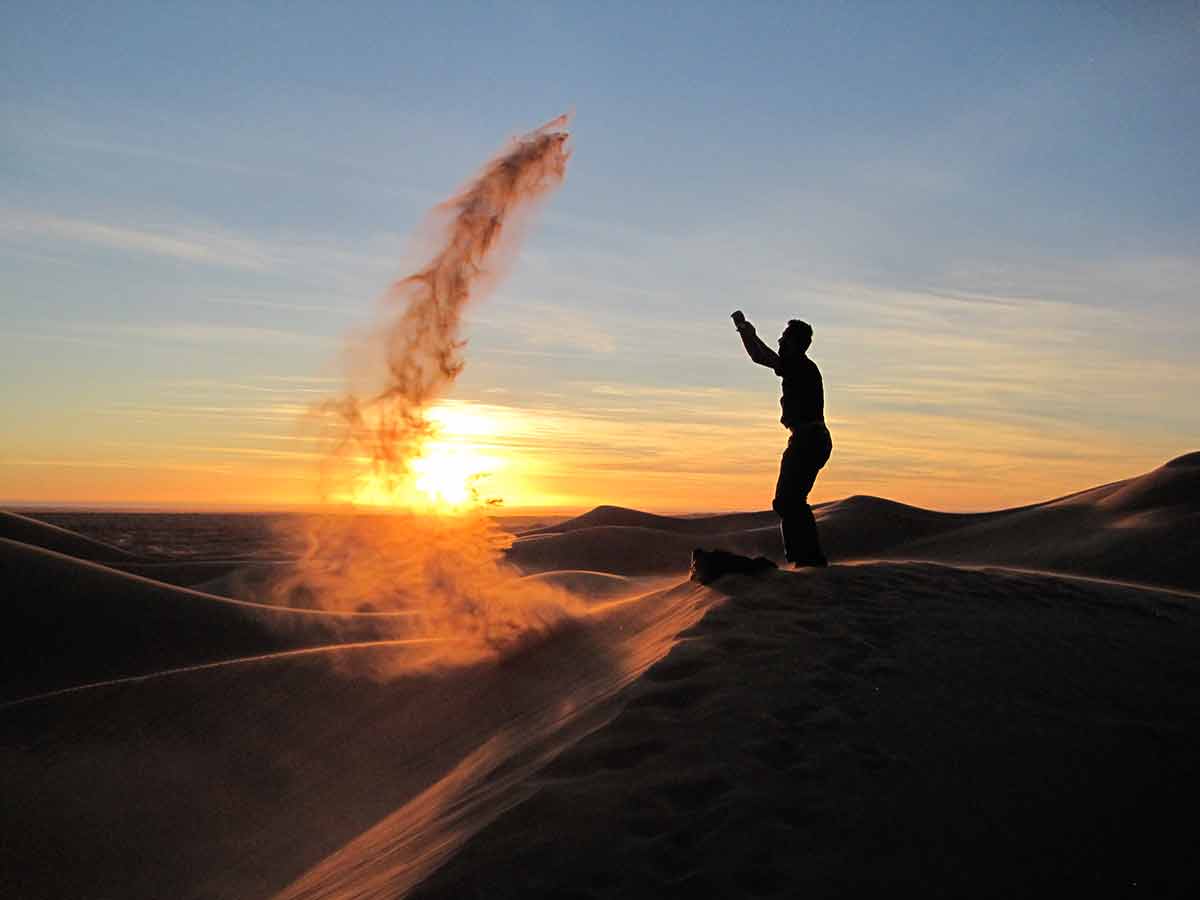
The state of Sonora, in north-western Mexico, is formed of semi-arid deserts and grasslands.
Sonora attracts many visitors because of its proximity to the United States and its beautiful beaches along the Gulf of Mexico.
Its most famous beaches are those of San Carlos, Puerto Penasco, Bahia Kino and the Gulf of Santa Clara in San Luis Rio Colorado.
If you enjoy active activities in nature, Sonora will not disappoint with scuba diving, sports fishing, birdwatching, kayaking and boating to entertain.
27- Tabasco
No! Not the sauce, the state! Tabasco is a state in southeastern Mexico bordering the country of Guatemala and the Gulf of Mexico.
Tabasco is one of Mexico’s wettest states, with rainfall all year round.
As a result, large parts of the state are covered in rainforests, swamps, jungles, rivers and lagoons, and this biodiversity lends it the nickname of Eden of Mexico.
One of the best attractions in this Mexican state is La Venta, an important site for the Olmecs, the first civilisation in Mexico.
28- Tamaulipas
Tamaulipas state in northeastern Mexico is rich in natural wealth with rainforests, beaches and waterfalls to explore.
While it shouldn’t put you off, it is important to travel mindfully in this state as its reputation for crime is one of the worst in Mexico.
To fully appreciate this Tamaulipas’ biodiversity, you shouldn’t miss the ‘El Cielo Biosphere Reserve’, which is home to jaguars, coyotes and many other reptiles.
This reserve is often engulfed in low clouds, where it gets its name, ‘el cielo’, ‘the sky’.
Tamaulipas also plays an important role in Mexico’s history, housing the first capital of Mexico, Ciudad Victoria and the once important port town of Tampico.
29- Tlaxcala
Tlaxcala in southeast-central Mexico is the country’s smallest state.
This state is rich in history, with some of Mexico’s earliest colonial buildings and Mexico’s oldest church.
An imposing backdrop of the state is the La Malinch volcano, a national park where visitors can enjoy activities like camping, mountain biking, horseriding or rock climbing.
Tlaxcala has a long tradition of bullfighting, particularly in the magic town of Huamantla, which is considered the capital of bullfighting.
30- Veracruz
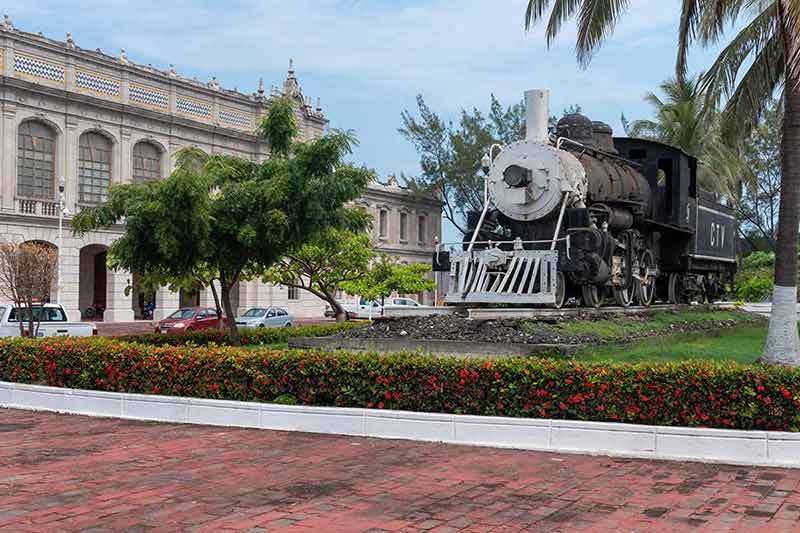
Veracruz, in central-eastern Mexico, is known for its colonial architectural heritage, indigenous ruins and multiethnic cuisine.
The state’s largest city, which goes by the same name, Veracruz, was an important trading port during colonial times and is where most of this state’s tourism is concentrated.
Top attractions to the state include Veracruz National Park, an area of 23 coral reefs just off the city of Veracruz’s coast, and Pico de Orizaba National Park, where you can find Mexico’s highest mountain.
31- Yucatán
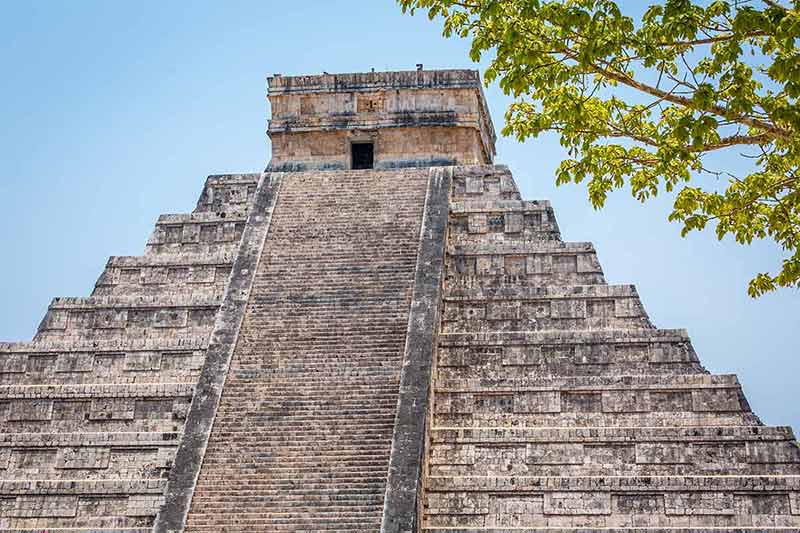
Located in southeast Mexico and bordering the Gulf of Mexico, the state of Yucatan is known as Mexico’s safest state and has a unique culture and cuisine due to its relative geographical isolation in the past.
What’s interesting about the state of Yucatan is that it is formed from the remains of a giant crater, the Chicxulub Crater.
It was formed from a meteor collision 66 million years ago, which scientists believe played a part in the extinction of the dinosaurs.
This state was a centre of Mayan culture and is home to the famous wonder of Chichen Itza and many beautiful cenotes or underground sinkholes for swimming and snorkelling.
Other cities of interest within the state include the capital of Merida, the cultural hub of southern Mexico, and the small picturesque colonial city of Vallodolid. This tour is extremely popular.
32- Zacatecas
The state of Zacatecas in north-central Mexico is best known for its rich silver deposits, colonial past, and relevance during the Mexican Revolution.
Zacatecas’ capital city of the same name is a World Heritage Site thanks to its rich architectural history funded by the silver mines that operated in the mountains surrounding the city and which were one of the largest wealth sources for the Spanish colonisers.
Popular attractions in the state of Zacatecas include the Sierra de Organos National Park.
This park has many oddly-shaped eroded rocks and is popular among hikers, extreme sports enthusiasts and photographers.
Plan Your Trip

Rent A Car – Find the best car rental rates at Discover Cars. They compare car hire companies to provide you with the best deal right now.

Find A Hotel – If you’re curious about this article and are looking for somewhere to stay, take a look at these amazing hotels.
